#tony bramwell
Text
10 November 1967
On this date, showing great foresight, Paul McCartney and Tony Bramwell film the video for "Now and Then" 56 years before it's needed.
youtube
#today in the life#the beatles#paul mccartney#Tony Bramwell#hello goodbye#now and then#10 November#1967#Youtube
60 notes
·
View notes
Text
Relieved at how well it had gone we were ready to return to the hotel and leap into the swimming pool again. When we went into the bungalow to change, followed by the trail of girls, we were rather surprised to find Linda [Eastman] sitting there radiantly, totally spaced out, waiting for Paul. She had a joint in one hand and a beatific smile on her face. Paul immediately detached himself from the circus surrounding him and took Linda aside. As I looked across the room, I suddenly saw something happen. Right before my eyes, they fell in love. It was like the thunderbolt that Sicilians speak of, the coup-de-foudre that the French speak of in hushed tones, that once-in-a-lifetime feeling. Paul was struck almost dumb as he and Linda gazed at each other.
Tony Bramwell, Magical Mystery Tours
#this is charming#who knows how much is hindsight#but given his many options i think it's clear SOMETHING really sparked#paul mccartney#linda eastman#Tony Bramwell
37 notes
·
View notes
Text
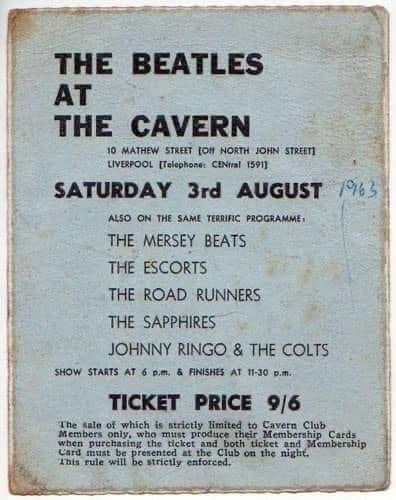
Today in 1963 The Beatles last performed at The Cavern Club! (Courtesy Tony Bramwell FB)
70 notes
·
View notes
Text
Sources
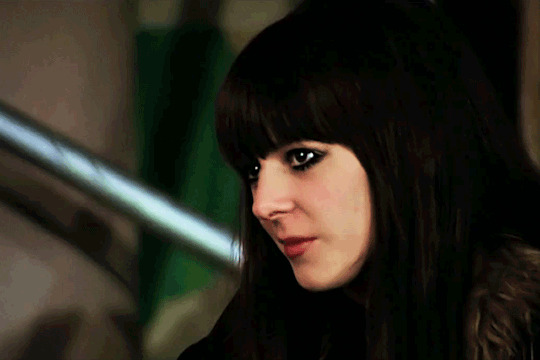
Most of what is known about Maureen Starkey comes from the writings of others. Below is a collection of links to some books which contain a fair amount of information about her, written by people who actually knew her. All links lead to the Internet Archive, a free and safe to use online library.
1. Miss O'Dell: My Hard Days and Long Nights with The Beatles, The Stones, Bob Dylan, Eric Clapton, and the Women They Loved by Chris O'Dell
Chris O'Dell is an American woman who worked at Apple in the late 1960s and early 1970s, and later went on to be George Harrison's personal assistant (and the inspiration for his song "Miss O'Dell"), and a tour manager for acts like Bob Dylan, the Rolling Stones, CSNY, Linda Ronstadt, and others. She has been called the "first" female tour manager, and was certainly among the first. She was a close friend with the Starkeys, and knew Mo from the end of the Beatles' career until Mo's death in 1994. Chris O'Dell also lent her voice to the "Hey Jude" chorus and was the Apple employee entrusted with the top-secret task of transporting Frank Sinatra's special recording of "The Lady is a Champ" for Maureen's 22nd birthday in 1968.
2. A Twist of Lennon and John by Cynthia Lennon
Cynthia Lennon, first wife of John Lennon, was the Beatle woman who knew Maureen Starkey the best. Though these sources (especially Twist) are not among the most reliable, due to Cynthia's occasional omissions and truth-bending (seemingly for her own protection), much of the information about Mo seems to be accurate since it can be corroborated by other sources. Cyn offers a fascinating account of her friend Maureen, and gives insight into the kind of person she was.
3. Magical Mystery Tours: My Life with the Beatles by Tony Bramwell
Tony Bramwell, like O'Dell, was an Apple employee; unlike O'Dell, however, Bramwell knew the Beatles from the beginning, just like Maureen, who he calls "Mitch." Tony remembers Mitch fondly as his friend from his teenage years, telling stories of watching the races from upper-story bedroom windows with her and his girlfriend, who was her best friend, and listening to her speak about her early concerns about her relationship with Ringo Starr, who they call "Richie." He also adds to the narrative the fact that Sinatra's "The Lady is a Champ," recorded as a gift for Maureen's 22nd birthday, was actually the very first Apple Records pressing, not "Hey Jude," as has been popularly reported in many Beatles biographies up until the publication of his book.
4. John, Paul, George, Ringo & Me: The Real Beatles Story by Tony Barrow
Tony Barrow was the Beatles' press officer from 1962 until 1968, in charge of maintaining the Beatles' media presence. In his book, he gives deeper background to many of the things previously reported about the Beatles, supplementing with his own background knowledge as someone who knew and worked with them. In particular, in regards to Maureen, he explains many of the things reported about her relationship with Ringo Starr, particularly about their hasty marriage, explaining that no one was surprised by their sudden marriage, and that the fact that she was pregnant at the time of the ceremony was not terribly uncommon in those days, though it wasn't something that could be openly discussed due to post-war English values.
5. The Beatles, Lennon, and Me: The Intimate Insider's Book, or John Lennon: In My Life, by Pete Shotton
These are essentially the same book; one is just a reprint. This book a joint biography and memoir, written by Peter "Pete" Shotton, who was lifelong friends with John Lennon. While this book does not give a lot of information about Maureen's life, or the things she said and did, it does offer a bit of deeper information about the role of the Beatles' women in their inner circle, and the women's relationships to one another and their men. It also paints a picture of Ringo and Mo as an almost inseparable duo, and corroborates the seemingly contradictory personas they maintained as both a traditional Northern couple and extravagant partiers.
6. The Beatles: The Authorized Biography by Hunter Davies
Hunter Davies was the Beatles' official biographer. Though this book does primarily focus on the band, there is also a substantial amount of information about their home lives, their families, and their marriages. Davies sheds light on Mo's artistic side and the kinds of things she liked to do in her leisure times.
#maureen starkey#the beatles#books#links#chris o'dell#cynthia lennon#tony bramwell#tony barrow#pete shotton#hunter davies
42 notes
·
View notes
Text
It’s true that when the Beatles first went into Abbey Road, they were nervous and shy, eager to please and stood almost at attention while performing. Sessions were quickly got out of the way and they escaped, as if from being lined up in the headmaster’s study. Even long after they came to realize their own power, they still treated George Martin and his wife, Judy, with extreme reverence, as if they were royalty. They cowed to the record executives and were, in many respects, extremely polite, almost humble. This wasn’t so much because they were provincials who had come down from Liverpool, but because in those days most people did tend to be in awe of authority figures, as Elvis was, even when he was the most successful pop star in the world.
We saw George Martin as Q in the James Bond films. You could imagine him saying, “Don’t fiddle with those knobs, Double-O-Lennon, you’ll blow us all to smithereens, there’s a good chap.” By that time, of course, John’s head was so full of controlled substances that George would probably have been right. John was about to blow our minds, if not blow us up.
[—Magical Mystery Tours: My Life with the Beatles, Tony Bramwell]
#this has been in my drafts for So Long#but is frankly even more funny after that anecdote about john giving george martin a pill that he took TO HIS DOCTOR…#also think bramwell definitely overstates how long that level of deference went on but it is an amusing image for their early days#george martin#john lennon#tony bramwell#magical mystery tours: my life with the beatles#the beatles
36 notes
·
View notes
Text

-Tony Bramwell (Magical Mystery Tours: My Life with the Beatles)
That's the first time I've seen someone directly talk about Geo's sexuality.
But John being aggressively hetero is one of the most idiotic things I've ever heard.
#john lennon#george harrison#tony bramwell#magical mystery tours: my life with the beatles#brian epstein
32 notes
·
View notes
Video
youtube
LECTURE 17: APOTHEOSIS: “I read the news today, oh boy!” This far-out, wild, trippy, LSD-inspired promotional film for “A Day in the Life,” the last song on Sgt. Pepper’s Lonely Heart’s Club Band, features a number of guest stars, including Mick Jagger, Keith Richards, Marianne Faithfull, Donovan, Graham Nash, Mike Nesmith (of The Monkees), and musicians from the London Philharmonic Orchestra in crazy disguises. The film was shot on February 10 and 11, 1967 (shooting went until past 1 in the morning) at EMI Studios by a number of participants (all given movie cameras by Tony Bramwell of NEMS. “A Day in the Life” is the most memorable song on Sgt. Pepper’s Lonely Hearts Club Band, which is saying something. It is also widely regarded as one of the crowning achievements, musically, of The Beatles, and often cited as their greatest song by chroniclers, critics and fans alike.
#A Day in the Life#The Beatles#Tony Bramwell#Sgt. Pepper's Lonely Hearts Club Band#1967#psychedelic rock#promotional films#EMI Studios#Abbey Road
0 notes
Text
I told him: “You know you love your own company. Even Cyn says you go days without speaking to her. She feels a million miles away from you.”
John replied: “Ah, but she’s not, is she. She’s in the kitchen putting the kettle on.”
—Tony Barrow, Beatles Book Monthly Magazine, No. 149 (Sept. 1988) [×]
¶
There’s one line in the lyric I don’t really mean: “Well knowing you / You’d probably laugh and say / That we were worlds apart”. I’m playing to the more cynical side of John, but I don’t think it’s true that we were so distant.
—Paul reads from his new book, The Lyrics (2021). [×]
¶
“I’m kind of expected to say, ‘[John] was a saint, he was always a saint, I remember him as a saint’, but it would be a lie. He was one great guy and part of his greatness was that he wasn’t a saint. He was a great guy but he was pretty sacrilegious. He was pretty up front about it. But it was half the fun.”
—Paul McCartney (c. 1984) in The Dream Is Over: Off The Record 2 by Keith Badman [×]
¶
“John is neither a saint, nor is he a sinner. He was just human, like the rest of us.”
—Cynthia Lennon, answering the question “John Lennon: saint or sinner?” The Independent, July 1999 [×]
¶
“Seeing Lennon focus on Ono rather than him[Paul] was as devastating as it would have been for Cynthia Lennon to witness the couple making love.”
—Peter Dogget, You Never Give Me Your Money. [×]
¶
“Then also we were like married, so you got the bitterness. It’s not a woman scorned this time, it’s two men scorned — probably even worse. And I had to make way for Yoko. My relationship with John could not have remained as it was and Yoko feel secure.”
— Paul McCartney, Interview by Duncan Fallowell in the Chicago Tribune, October 14th, 1984 [×]
¶
“Apart from giving me the courage to break out of my stockbroker belt... Yoko also gave me the inner strength to look more closely at my other marriage. My real marriage. To The Beatles, which was more stifling than my domestic life. Although I had thought of it often enough, I lacked the guts to make the break earlier.”
—Skywriting By Word Of Mouth by John Lennon (pg. 17) [x]
¶
“I still think at the back of John’s mind was this fascination of wanting to get back with the first girlfriend, if you like, and that was to get back with Paul, who he had so much history with.”
—Tony Barrow, The Beatles’ press officer, on the Lennon/McCartney reunion that was never to be [×]
¶
“I mean, I think really what it was, really all that happened was that John fell in love. With Yoko. And so, with such a powerful alliance like that, it was difficult for him to still be seeing me. It was as if I was another girlfriend, almost. Our relationship was a strong relationship. And if he was to start a new relationship, he had to put this other one away. And I understood that. I mean, I couldn’t stand in the way of someone who’d fallen in love. You can’t say, “Who’s this?” You can’t really do that. If I was a girl, maybe I could go out and…”
—April 3rd?, 1985 (Soho Square, London): Paul talks on German television show exclusive about the breakup of the Beatles and his personal breakup with John. [x]
¶
“But Paul was his own man and not afraid of John. In fact, musically and personally, the two were beginning to go in separate directions so perhaps Paul’s visit to me was also a statement to John.”
—Cynthia Lennon, John [×]
¶
“Paul, who believed strongly in the family and in family values, told me that he felt as if it was the Beatles themselves who were heading for divorce, not just John and Cynthia.”
—Tony Bramwell, Magical Mystery Tours [×]
I wanted to end this post with a quote from Cynthia, whether it was from a book or was an answer to a question, about how she simply misses lying in bed with John, and just the two of them talking. This quote from her book John [x] is relevant, but unfortunately I couldn't find the exact quote I wanted.
To accompany the sentiment from John's first wife though, is this quote:
“If John Lennon could come back for a day, how would you spend it with him?”
“In bed.”
—Paul McCartney answers questions for Q magazine, 1998 [x]
#anthology of mclennon#mclennon#paul mccartney#cynthia lennon#john lennon#it's not much but it's what i felt i needed to do#point is cyn and paul loved and lost#the meeting of wives#husband and wife#parallels it's the dots I've connected
259 notes
·
View notes
Photo

"For a girl who looked like a doll, playing with a real doll's house - and to be sharing it with one of the world's most attractive and eligible young men — was a fantasy, let alone for a girl who was only eighteen." - Tony Bramwell
#beatlesedit#the beatles#pattie boyd#sixties sweethearts#*#she was already nineteen when she met george and was even older when she moved it with him damn tony you should know this!#these were your friends and i have to do all the work in the tags?#shame shame shame#my mom compared pattie to pamela des barres the other day and i SWUNG at her#mom: 'what is the difference?' me: 'oh come on mom don't make me say it!'
356 notes
·
View notes
Note
It took only a little time for Ringo to revere, respect and love John the same way Paul and George did. They were all close, but John was the fountainhead, the man you couldn’t take your eyes off of, the glue, the one each had his best relationship with. Paul was much closer to John than he was to George, and George was a fair bit closer to John than he was to Paul.”
Does drunken mess best man Paul at George’s wedding mean nothing to you Lewisohn?
I actually don’t think we ever have or will at this point get a proper understanding of the nuances of the relationship between the four of them during the Beatles pre everything falling apart because the majority of sources come from the 70s onwards. The Let It Be argument being misremembered for 50 years by the actual Beatles makes that clear. But sometimes I think about Tony Bramwell (I know) in a random documentary saying that John and George never got along that well and I wonder.
Yeah. I'm not sure how accurate Lewisohn's assessment is.
I would probably agree that George "got along better" with John than Paul after a certain point (maybe post-66? or even post-acid?)... But Paul and George seem to have been closer friends in the beginning, and for much of the time period covered in Tune In. That also seems to be George and Paul's assessment! They both appear to confirm that they were pretty close in the Early Days.
Maybe George and Paul weren't as close in Hamburg, due to the influx of the Exis. But even that, I think, is a bit exaggerated. Certain comments made by Astrid seem to indicate that they thought of George as a cute little guy, almost like a mascot. :/ (Didn't Astrid dub him the "Baby One?" or was that someone else?) I'm not saying that perception persisted- I definitely think Astrid and Klaus grew to respect and love George as an individual and a great artist. But at the start he was only 17 (!) and that definitely mattered to them.
The thing about Paul and George is... as much as George loved and respected John and "got along" with him so much better in later years... IDK, they never seemed quite as "close" as Paul and George. Do you know what I mean? Even when George hates Paul (which sadly I think is pretty frequently, after 1968!) it feels like the way you hate your asshole older brother. Does that make sense? I also suspect that so much of their conflict is based in George deliberately pushing Paul away in favor of John, which is steeped in resentment for John and Paul's impenetrable closeness, making the whole triangle complicated in a way only families truly can be.
So even though it seems like a cop out, or oversimplification, I do think the easiest metaphor for Paul and George is always "brothers." And as such I think of them as close, always, even if they are often not the best of friends.
#George and Paul#honestly I think Lewisohn#was just trying to tell everyone how spectacular John was in this passge#I don't think he was making an earnest evidence-based assessment
24 notes
·
View notes
Text
30 June 1968
Returning from Yorkshire to London, Paul McCartney, Derek Taylor, Peter Asher and Tony Bramwell detour to the village of Harrold. Asking a local for directions to the river, they end up at a pub instead. Songs are sung and ale is drunk and a good time is had by all except perhaps Shayne Mitchell, the daughter of their host, who went to bed to read a book.
18 notes
·
View notes
Note
Re: your post about JohnandPaul. If you do wish to share them, I'd love to know your headcanons about John and Paul's feelings for each other. ( I do get your discomfort about sharing though and yeah, I also miss the long discussions and metas from back when Get Back came out. It feels like, except you and some others, most of my favorite blogs have moved on from the fandom)
I've been sitting on this ask for several days now.
First of all I hear you, re:blogs moving on. It's understandable, but it's also sad when my brain does not want to give this stuff up any time soon lol.
In my post I talked about having specific headcanons about their feelings for each other, but the truth is, it's more like I imagine hundreds of very specific somewhat plausible scenarios, while not actually fully buying into any of them.
I always struggle with how sure people are of some definite timeline of McLennon because I just don't see how it's in any way clear: the most compelling evidence that at least John had Those Feelings™ for Paul is stuff he said after the fact (compiled with the stronger case for John being attracted to men in general) – so, if I choose to interpret his words in that way, I'm still not very close to knowing when he developed this attraction. Let alone concluding anything substantial about Paul's feelings.
(And no, I really don't find the two of them saying the other looked good when they met particularly compelling. Appearance plays a huge role in first impressions, regardless of attraction.)
So I guess, it's more that I have open questions I return to again and again, for which I try to construct hypothetical answers that make sense to me. Aside from that bigger timeline question, here's a few more specific ones:
From what I've gathered researching the topic, listening to psychonauts speak about their trips, the acid mindset very much romanticizes all forms of human connection (among other things). I think that's probably what was going on during those "I know."–"I know." sessions John and Paul had on LSD. With that in mind, how might that have mixed in with John trying to understand how he felt about Paul? Could it have confused him? Opened him up to the idea? "Appeased" him for a while? (and again, the answer here would depend on the timeline of feelings in the end)
I still lean towards "Paul is not meaningfully attracted to men" (or at least "Paul valued other aspects of his relationship with John much more than physical attraction") – with that in mind I do kind of ask myself what Paul thought his relationship with John was exactly. Like, I don't pretend it was a standard, run-of-the-mill friendship, so I wonder a lot what his end-goal was, how he saw both of them continuing into later stages of life. The way he talks about the breakup, equating John choosing Yoko with John leaving Paul, speaks to something somewhat true about most couples that marry – but why did he not anticipate that before? What was different? Also, for $20 don't copout with "hurr hurr cause Cyn didn't matter"
Paul's various takes on The John Question continue to puzzle me. On the one hand, it sort of seems to me like Paul would have had enough context clues at the time to get that John was attracted to men, because some of our evidence for it is evidence he would have had access to – he also indicated at least once that John was in fact kind of openly bicurious??? (note: that rant keeps me up at night. Could write a whole thesis on it and also it's so fucking funny) On the other, Paul is pretty insistent that the rumours are Not True and he's not actually the only person to shoot them down like that. (May Pang, Julia Baird, Tony Bramwell, Hunter Davies off the top of my head) It shouldn't be a stretch of the imagination that a man born in the 1940s might have trouble rearranging the image he's made of his dead best friend so drastically (or in a way that might feel drastic to him). So what is it? Is Paul obfuscating the question to protect John's reputation/because he thinks the curiosity is in poor taste or does he genuinely not buy into it? I'm not actually sure whether he's weighed in on this since Yoko's "John Was BI!!!!" reveal. Has this stance developed over the years?
And if I assume Paul does know about John's sexuality: does he in fact think John had feelings for him? I do think this is a thing he would never talk about if he did so it feels like there would be no way of knowing either way. But it also makes me wonder about the barriers he might have set up in his head to avoid that very question – because the truth is that if John had Those Feelings™ for Paul and Paul never knew, that's sort of the second-worst case scenario from Paul's perspective, right after John having never liked him in the first place.
AND THEN THERE'S JOHN. Because just because Paul may not have picked up on it, doesn't mean John wasn't putting anything down. But he could also very much have been sending mixed signals from his own end, right? And again, acid mindset + mid 60s Free Love shit: in that culture, how much could John making advances be perhaps taken as Flowery Friendship? Did he justify it to himself that way? Or was John actually violently shoving all of that down? Was he truly capable of that?
It really never ends – I'm not certain of ANYTHING, but give me a proposal (ie. "In My Life is about Paul") and I'll talk myself into circles exploring the ins and outs of that hypothetical.
18 notes
·
View notes
Text
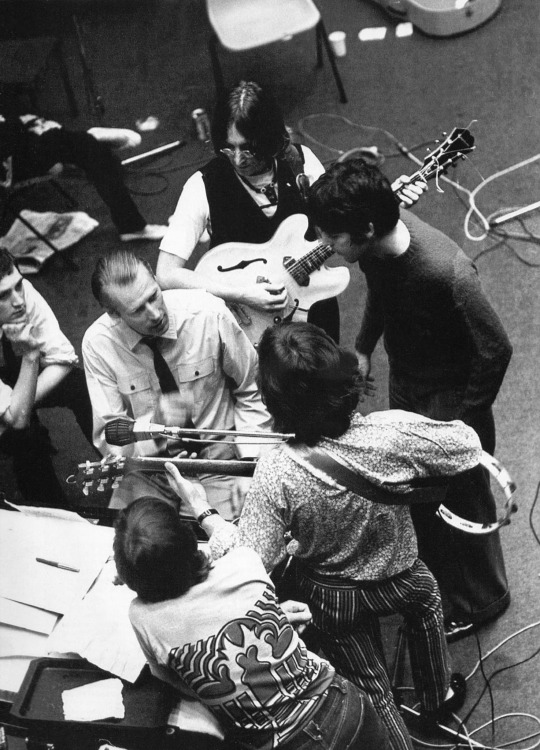
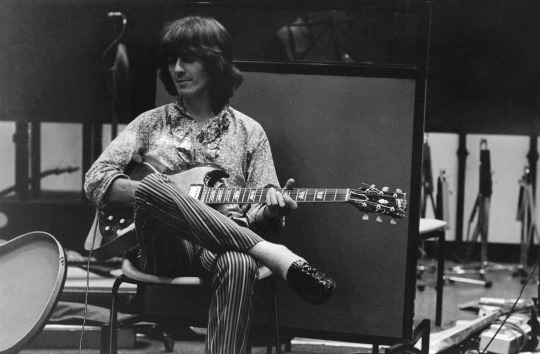



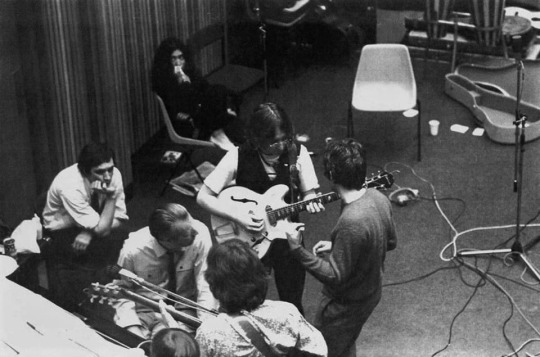
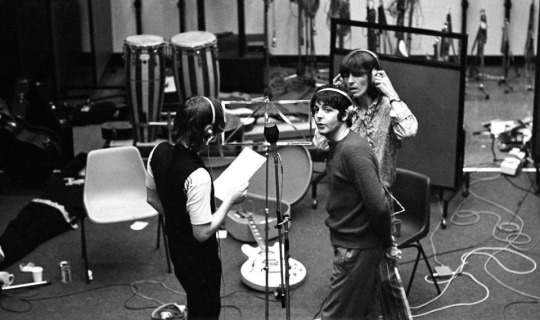


The Beatles recording Hey Jude, circa August 1, 1968, at Trident Studios, St Anne’s Court, London. Produced by George Martin and Engineered by Barry Sheffield. Having recorded the basic rhythm track for ‘Hey Jude’ the previous day, The Beatles finished the recording during this 5pm-3am session. Having recorded the basic rhythm track for ‘Hey Jude’ the previous day, The Beatles finished the recording during this 5pm-3am session.
The session took place at Trident Studios in London’s Soho, which had been chosen for its eight-track recording facilities. Overdubs added to take one included lead and backing vocals, bass guitar, tambourine, handclaps, and a 36-piece orchestra.
The orchestra featured 10 violins, three violas, three cellos, two flutes, contrabassoon, bassoon, two clarinets, contrabass clarinet, four trumpets, four trombones, two horns, two string basses and percussion.
The Hey Jude promo was filmed circa September 4, 1968. Photography by Tony Bramwell ©(http://www.thebeatles.com/).
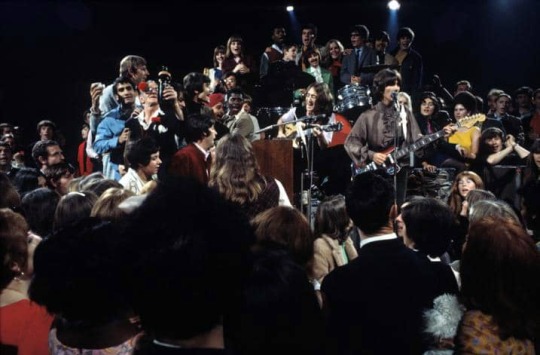
#the beatles#hey jude#paul mccartney#george harrison#ringo starr#john lennon#george martin#tony bramwell#trident recording studios#barry sheffield
84 notes
·
View notes
Photo
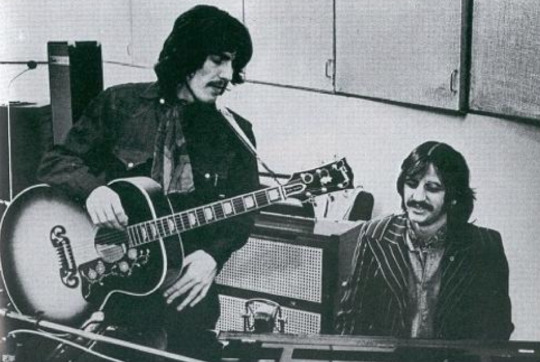
George Harrison and Ringo Starr working on “Octopus’s Garden” in the studio, January 1969. Photo by Mal Evans or Tony Bramwell, for The Beatles Book monthly.
A look at some Harrison-Starkey musical collaborations.
“This next song is called ‘It Don’t Come Easy.’ I wrote this song with the one and only George Harrison.” - Ringo Starr, VH1 Storytellers (1998)
“So George taught me C, which was so damn hard. That’s how [‘Photograph’] started. I love the sentiment of ‘Photograph.’ When we did The Concert For George, I told the audience that ‘Photograph’ now has a different meaning just because of the fact that George has left.” - Ringo Starr, liner notes, Photograph: The Very Best of Ringo Starr (2007)
"George wrote that one. I was watching a lot of TV then [1981], as he writes in one of the lyrics in the song. Also I was probably going insane too. George thought this song would be good for me. It’s a song I knew he’d never do. So it gave George some freedom and it was a bit looser than something that he would do for himself." - ibid
“When Ringo asked [George]… to compose guitar music for a new song, ‘King of Broken Hearts,’ George put his own heart into it. One reviewer would later describe his beautiful slide-guitar work as ‘sharing a little of his soul… [a] moving musical statement [that] spoke of the musician’s inner peace.’
George sent the tape off by mail. Ringo took the package to his recording studio and sat with his hands behind his head, listening to an unexpected poetry of notes.
'You’re killing me, George,' he mumbled. 'You’ve got me crying, you bugger.’” - Here Comes The Sun: The Spiritual and Musical Journey of George Harrison (2006)
Ringo Starr: "'Never Without You,' the tribute track to George - or the love track. I don't really like the tribute - you know, the word 'tribute.' It's just to let George know we loved him." [...]
Q: "You mentioned 'Never Without You.' That's the next song we're going to hear from Ringo Rama. You said, not a tribute. What did you say?"
RS: "It's just with love."
Q: "With love for George."
RS: "Yeah. [...] [The 2002 Concert for George] helped with the closure, I felt, that we all sort of... we had this focus of the show, but we could hang out with each other and, you know, deal with the loss of George, who, you know, I still miss."
Q" "The song 'Never Without You' didn't really start out purely about George, did it?"
RS: "Well, it started out just as a band. And then I thought, wow, this would be great, after the first verse, that we were brothers through it all. It just became natural that it was about the Beatles, in a way. And, of course, George had just left us then. It was like four months after he died. And so then I thought, oh, that would be great. I can say this about George. Then, oh, well, I can say this about John. Oh, and I can say this about Harry Nilsson. And so it just got too cluttered and too crazy. So I had to stop everything and say, 'Now, where are we going? Okay. This is just for George. And that way, I - you know, I could use some of his lines in the song itself, never - you know, 'within you, without you' is his line. Sometimes you just go mad and you've got to stop and look at what you do and then you do it right. And I think the song says everything that I ever want to say."
Q: "Why was it so easy for you to write with George on classics like 'It Don't Come Easy' and 'Photograph' so soon after the Beatles split?"
RS: "Well, you know, George was my good friend. And I was very good at two verses and a chorus. And then I would take it over to George's and he'd finish 'Photograph.' And he finished 'It Don't Come Easy.' And also, you know, I'm not the best guitarist in the world. I have to admit that. I might be a great drummer, but I'm not the best guitarist. And so he would put in all these chords that made me sound like a genius and tie the song up. [...] So George was always great. We always had a lot of fun in the studio, you know." - Ringo Rama Radio Hour, 25 March 2003
“['Never Without You’] is all about George. The song is still very poignant for me, and I tried not to do it on the last tour, but I had to do it because it’s a beautiful song and expresses what I felt for the man. […] He had just gone and I wanted to express my love for him.” - Ringo Starr, liner notes, Photograph: The Very Best of Ringo Starr (2007) (x)
#George Harrison#Ringo Starr#Harrison cowriting#George and Ringo#quote#quotes about George#Octopus's Garden#It Don't Come Easy#Photograph#Wrack My Brain#never without you#et al#fits queue like a glove
76 notes
·
View notes
Text



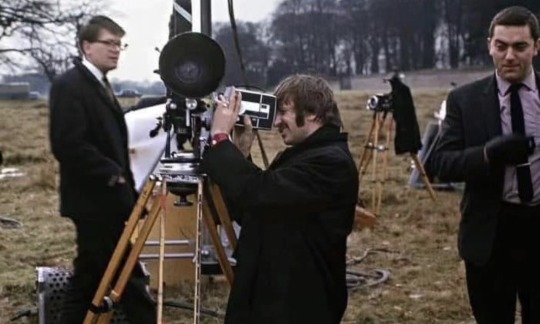
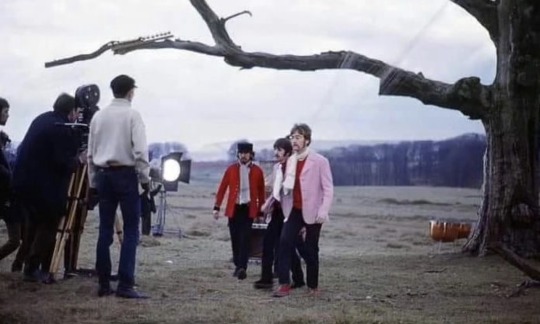
The Beatles film the promo for their new single, 'Strawberry Fields Forever, Knole Park, January 30-31, 1967🍓
The Beatles Bible - Having decided that their next single would be the double a-side 'Strawberry Fields Forever' and 'Penny Lane, The Beatles took part in promotional films. Work began on this day in Knole Park in Sevenoaks, Kent🍓
The films were both produced by Tony Bramwell for Subafilms, and were shot on colour 35mm film by a crew from London-based Don Long Productions. The Swedish director was Peter Goldman, who had been recommended by Klaus Voormann… Vintage colour slides.Modern limited edition prints, can now be ordered from Morrison Hotel Gallery🍓
Via @thevicentvigilcollection on Instagram🌸🌼🌺
3 notes
·
View notes
Photo

Marian Marsh, Bramwell Fletcher, and John Barrymore in Svengali (Archie Mayo, 1931)
Cast: John Barrymore, Marian Marsh, Donald Crisp, Bramwell Fletcher, Carmel Myers, Luis Alberni, Lumsden Hare, Paul Porcasi. Screenplay: J. Grubb Alexander, based on a novel by George L. Du Maurier. Cinematography: Barney McGill. Art direction: Anton Grot. Film editing: William Holmes. Music: David Mendoza.
George Du Maurier's 1894 novel was called Trilby, as were many of the stage adaptations and early silent film versions. But if you cast John Barrymore as the sinister hypnotist, you almost have to call your film Svengali. It's one of Barrymore's juiciest movie performances, but it surprisingly didn't earn him an Oscar nomination -- an honor he never received. To add to the irony, the best actor Oscar that year went to his brother Lionel for A Free Soul (Clarence Brown, 1931), and one of the actors who did receive a nomination was Fredric March for playing Tony Cavendish, an obvious caricature of John Barrymore, in The Royal Family of Broadway (George Cukor and Cyril Gardner, 1930). Though Barrymore's Svengali doesn't particularly deserve an award, it's the best thing about the film aside from the sets by Anton Grot that were influenced by German expressionism and did earn Grot a nomination, as did cinematographer Barney McGill's filming of them. Like many early talkies, Svengali is slackly paced, as if director Archie Mayo, who learned his craft in the silent era, was still slowing things down so title cards could be placed at the appropriate intervals. It also has some problems of tone: Svengali is not quite the sinister monster you expect him to be from his reputation as an archetype of masterful control. In the beginning he's the butt of horseplay from some of his fellow Paris bohemians, the painters known as The Laird (Donald Crisp) and Taffy (Lumsden Hare), who decide he doesn't bathe often enough and dump him into a bathtub. We know his potential for evil after he causes Madame Honori (Carmel Myers) to commit suicide, but even her character is played for comedy before her untimely end. In this adaptation, by J. Grubb Alexander, the plot revolves around Svengali's manipulation of Trilby (Marian Marsh), an artist's model whose potential as a singer -- even though she can't quite carry a tune -- he deduces from the shape of her mouth. He uses his hypnotic powers to turn her into a diva, though the one performance we see from her, a bit of the Mad Scene from Lucia di Lammermoor, doesn't merit the ovation it receives -- perhaps he hypnotized the audience, too. But control of Trilby comes at a cost: Svengali's health begins to decline, and Trilby's career along with it, until at the end they both die as she performs in a nightclub in Cairo, second-billed to a troupe of belly-dancers. Only the lovestruck young artist known as "Little Billee" (Bramwell Fletcher), who has devoted his life to tracking Trilby in hopes of winning her back, is there to witness her end. Thanks to Barrymore, and some good support from character actors like Luis Alberni, who plays Svengali's assistant with the improbable name Gecko, Svengali is never unwatchable, and it mostly avoids the antisemitic notes that many have observed in the character, who is said to have mysterious origins, perhaps in Poland, in the novel and its adaptations.
7 notes
·
View notes